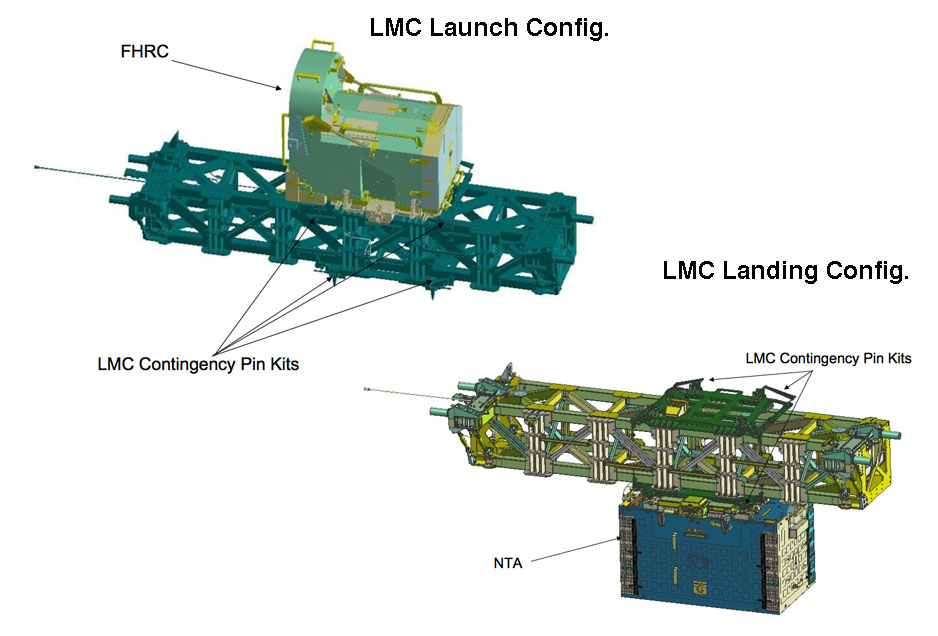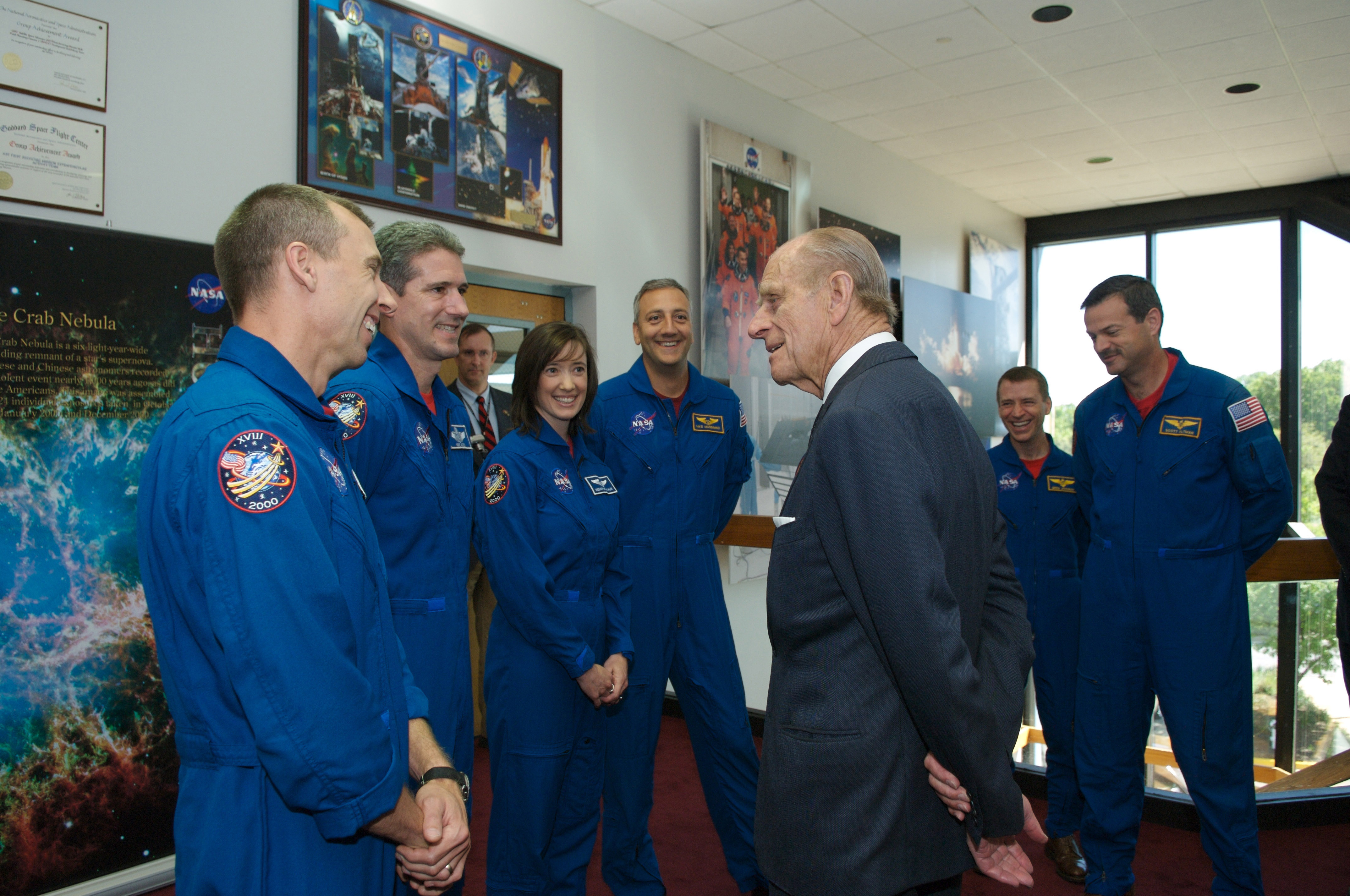|
STS-119
STS-119 (ISS assembly flight 15A) was a Space Shuttle mission to the International Space Station (ISS) which was flown by space shuttle Discovery during March 2009. It delivered and assembled the fourth starboard Integrated Truss Segment (S6), and the fourth set of solar arrays and batteries to the station. The launch took place on 15 March 2009, at 19:43 EDT. ''Discovery'' successfully landed on 28 March 2009, at 15:13 pm EDT. Crew Crew notes This mission was originally scheduled to bring the Expedition 9 crew to the ISS. This crew would have consisted of: Mission payload STS-119 delivered the S6 solar arrays to the space station, completing the construction of the Integrated Truss Structure. STS-119 also carried several experiments, including the Shuttle Ionospheric Modification with Pulsed Local EXhaust (SIMPLEX), Shuttle Exhaust Ion Turbulence Experiments (SEITE), and Maui Analysis of Upper Atmospheric Injections (MAUI). STS-119 was also used for the "Boundary L ... [...More Info...] [...Related Items...] OR: [Wikipedia] [Google] [Baidu] |
Steven Swanson
Steven Roy Swanson (born December 3, 1960 in Syracuse, New York) is an American engineer and retired NASA astronaut. Swanson has flown two shuttle flights, STS-117 and STS-119, and one Soyuz flight, TMA-12M. All of the flights were to the International Space Station. He has logged over 195 days in space and completed five spacewalks totaling 28 hours and 5 minutes. Swanson has served in other roles at NASA, such as a CAPCOM for both International Space Station and Space Shuttle missions. His awards and honors include the NASA Exceptional Achievement Medal and the JSC Certificate of Accommodation. Prior to becoming a NASA astronaut, Swanson worked for GTE in Phoenix, Arizona, as a software engineer. He is married and has three children. Early life Although born in Syracuse, New York, Swanson considers Steamboat Springs, Colorado to be his home. He graduated from Steamboat Springs High School in 1979, and went on to the University of Colorado to receive a bachelor's d ... [...More Info...] [...Related Items...] OR: [Wikipedia] [Google] [Baidu] |
Koichi Wakata
is a Japanese engineer and a JAXA astronaut. Wakata is a veteran of four NASA Space Shuttle missions, a Russian Soyuz mission, and a long-duration stay on the International Space Station. During a nearly two-decade career in spaceflight, he has logged more than eleven months in space. During Expedition 39, he became the first Japanese commander of the International Space Station. Wakata flew on the Soyuz TMA-11M/ Expedition 38/ Expedition 39 long duration spaceflight from 7 November 2013 to 13 May 2014. During this spaceflight he was accompanied by Kirobo, the first humanoid robot astronaut. Career Wakata was born in Ōmiya, Saitama, Japan, earned a Bachelor of Science degree in Aeronautical Engineering in 1987, a Master of Science degree in Applied Mechanics in 1989, and a Doctorate in Aerospace Engineering in 2004 from Kyushu University. He worked as a structural engineer for Japan Airlines. JAXA career Wakata was selected by the National Space Development Agency of Japan ... [...More Info...] [...Related Items...] OR: [Wikipedia] [Google] [Baidu] |
Sandra Magnus
Sandra Hall Magnus (born October 30, 1964) is an American engineer and a former NASA astronaut. She returned to Earth with the crew of STS-119 ''Discovery'' on March 28, 2009, after having spent 134 days in orbit. She was assigned to the crew of STS-135, the final mission of the Space Shuttle. She is also a licensed amateur radio operator with the call sign KE5FYE. From 2012 until 2018 Magnus was the executive director of the American Institute of Aeronautics and Astronautics. Biography Early life and education Magnus was born and raised in Belleville, Illinois. She earned degrees in physics and electrical engineering from the University of Missouri–Rolla (now known as the Missouri University of Science and Technology) before earning a PhD in materials science and engineering from the Georgia Institute of Technology in 1996. Research for her dissertation, entitled "An Investigation of the relationship between the thermochemistry and emission behavior of thermionic cathodes ... [...More Info...] [...Related Items...] OR: [Wikipedia] [Google] [Baidu] |
S6 Truss
The Integrated Truss Structure (ITS) of the International Space Station (ISS) consists of a linear arranged sequence of connected trusses on which various unpressurized components are mounted such as logistics carriers, radiators, solar arrays, and other equipment. It supplies the ISS with a bus architecture. It is approximately 110 meters long and is made from aluminum and stainless steel. Truss components All truss components were named after their planned end-positions: Z for zenith, S for starboard and P for port, with the number indicating the sequential position. The S0 truss might be considered a misnomer, as it is mounted centrally on the zenith position of ''Destiny'' and is neither starboard nor port side. Manufacturing ISS truss segments were fabricated by Boeing in its facilities at Huntington Beach, California (formerly McDonnell Douglas), Michoud Assembly Facility in New Orleans, Louisiana, Marshall Space Flight Center in Huntsville, Alabama, and in Tuls ... [...More Info...] [...Related Items...] OR: [Wikipedia] [Google] [Baidu] |
Expedition 18
Expedition 18 was the 18th permanent crew of the International Space Station (ISS). The first two crew members, Michael Fincke, and Yuri Lonchakov were launched on 12 October 2008, aboard Soyuz TMA-13. With them was astronaut Sandra Magnus, who joined the Expedition 18 crew after launching on STS-126 and remained until departing on STS-119 on 25 March 2009. She was replaced by JAXA astronaut Koichi Wakata, who arrived at the ISS on STS-119 on 17 March 2009. Gregory Chamitoff, who joined Expedition 18 after Expedition 17 left the station, ended his stay aboard ISS and returned to Earth with the STS-126 crew. Crew Crew notes Salizhan Sharipov, was originally slated to be the Soyuz commander and Expedition 18 Flight Engineer 1, but was replaced by his back-up Yuri Lonchakov. Backup crew * Gennady Padalka – Commander – RSA (for Lonchakov) * Michael Barratt- Flight Engineer – NASA (for Fincke) * Timothy Kopra – Flight Engineer – NASA (for Chamitoff) * Nicole S ... [...More Info...] [...Related Items...] OR: [Wikipedia] [Google] [Baidu] |
STS-126
STS-126 was the one hundred and twenty-fourth NASA Space Shuttle mission, and twenty-second orbital flight of the ''Space Shuttle Endeavour'' (OV-105) to the International Space Station (ISS). The purpose of the mission, referred to as ULF2 by the ISS program, was to deliver equipment and supplies to the station, to service the Solar Alpha Rotary Joints (SARJ), and repair the problem in the starboard SARJ that had limited its use since STS-120. STS-126 launched on 15 November 2008 at 00:55:39 UTC from Launch Pad 39A (LC-39A) at NASA's Kennedy Space Center (KSC) with no delays or issues. ''Endeavour'' successfully docked with the station on 16 November 2008. After spending 15 days, 20 hours, 30 minutes, and 30 seconds docked to the station, during which the crew performed four spacewalks, and transferred cargo, the orbiter undocked on 28 November 2008. Due to poor weather at Kennedy Space Center, ''Endeavour'' landed at Edwards Air Force Base on 30 November 2008 at 21:25:09 UT ... [...More Info...] [...Related Items...] OR: [Wikipedia] [Google] [Baidu] |
Assembly Of The International Space Station
The process of assembling the International Space Station (ISS) has been under way since the 1990s. '' Zarya'', the first ISS module, was launched by a Proton rocket on 20 November 1998. The STS-88 Space Shuttle mission followed two weeks after ''Zarya'' was launched, bringing '' Unity'', the first of three node modules, and connecting it to ''Zarya''. This bare 2-module core of the ISS remained uncrewed for the next one and a half years, until in July 2000 the Russian module '' Zvezda'' was launched by a Proton rocket, allowing a maximum crew of three astronauts or cosmonauts to be on the ISS permanently. The ISS has a pressurized volume of approximately , a mass of approximately , approximately 100 kilowatts of power output, a truss long, modules long, and a crew of seven. Building the complete station required more than 40 assembly flights. As of 2020, 36 Space Shuttle flights delivered ISS elements. Other assembly flights consisted of modules lifted by the Falcon 9, Russia ... [...More Info...] [...Related Items...] OR: [Wikipedia] [Google] [Baidu] |
Space Shuttle Discovery
Space Shuttle ''Discovery'' ( Orbiter Vehicle Designation: OV-103) is one of the orbiters from NASA's Space Shuttle program and the third of five fully operational orbiters to be built. Its first mission, STS-41-D, flew from August 30 to September 5, 1984. Over 27 years of service it launched and landed 39 times, aggregating more spaceflights than any other spacecraft to date. The Space Shuttle launch vehicle has three main components: the Space Shuttle orbiter, a single-use central fuel tank, and two reusable solid rocket boosters. Nearly 25,000 heat-resistant tiles cover the orbiter to protect it from high temperatures on re-entry. ''Discovery'' became the third operational orbiter to enter service, preceded by ''Columbia'' and '' Challenger''. It embarked on its final mission, STS-133, on February 24, 2011, and touched down for the last time at Kennedy Space Center on March 9, having spent a cumulative total of nearly a full year in space. ''Discovery'' performed both ... [...More Info...] [...Related Items...] OR: [Wikipedia] [Google] [Baidu] |
STS-125
STS-125, or HST-SM4 (Hubble Space Telescope Servicing Mission 4), was the fifth and final Space Shuttle mission to the Hubble Space Telescope (HST) and the last solo flight of the Space Shuttle ''Atlantis''. The launch of the Space Shuttle ''Atlantis'' occurred on 11 May 2009 at 2:01 pm EDT. Landing occurred on 24 May at 11:39 am EDT, with the mission lasting a total of just under 13 days. carried two new instruments to the Hubble Space Telescope, the Cosmic Origins Spectrograph and the Wide Field Camera 3. The mission also replaced a Fine Guidance Sensor, six gyroscopes, and two battery unit modules to allow the telescope to continue to function at least through 2014. The crew also installed new thermal blanket insulating panels to provide improved thermal protection, and a soft-capture mechanism that would aid in the safe de-orbiting of the telescope by a robotic spacecraft at the end of its operational lifespan. The mission also carried an IMAX camera with which th ... [...More Info...] [...Related Items...] OR: [Wikipedia] [Google] [Baidu] |
Kennedy Space Center Launch Complex 39
Launch Complex 39 (LC-39) is a rocket launch site at the John F. Kennedy Space Center on Merritt Island in Florida, United States. The site and its collection of facilities were originally built as the Apollo program's "Moonport" and later modified for the Space Shuttle program. Launch Complex 39 consists of three launch sub-complexes or "pads"— 39A, 39B, and 39C—a Vehicle Assembly Building (VAB), a Crawlerway used by crawler-transporters to carry mobile launcher platforms between the VAB and the pads, Orbiter Processing Facility buildings, a Launch Control Center which contains the firing rooms, a news facility famous for the iconic countdown clock seen in television coverage and photos, and various logistical and operational support buildings. SpaceX leases Launch Complex 39A from NASA and has modified the pad to support Falcon 9 and Falcon Heavy launches. NASA began modifying Launch Complex 39B in 2007 to accommodate the now defunct Constellation program, an ... [...More Info...] [...Related Items...] OR: [Wikipedia] [Google] [Baidu] |
International Space Station
The International Space Station (ISS) is the largest Modular design, modular space station currently in low Earth orbit. It is a multinational collaborative project involving five participating space agencies: NASA (United States), Roscosmos (Russia), JAXA (Japan), European Space Agency, ESA (Europe), and Canadian Space Agency, CSA (Canada). The ownership and use of the space station is established by intergovernmental treaties and agreements. The station serves as a microgravity and space environment research laboratory in which Scientific research on the International Space Station, scientific research is conducted in astrobiology, astronomy, meteorology, physics, and other fields. The ISS is suited for testing the spacecraft systems and equipment required for possible future long-duration missions to the Moon and Mars. The International Space Station programme, ISS programme evolved from the Space Station Freedom, Space Station ''Freedom'', a 1984 American proposal to constr ... [...More Info...] [...Related Items...] OR: [Wikipedia] [Google] [Baidu] |
Space Shuttle
The Space Shuttle is a retired, partially reusable low Earth orbital spacecraft system operated from 1981 to 2011 by the U.S. National Aeronautics and Space Administration (NASA) as part of the Space Shuttle program. Its official program name was Space Transportation System (STS), taken from a 1969 plan for a system of reusable spacecraft where it was the only item funded for development. The first ( STS-1) of four orbital test flights occurred in 1981, leading to operational flights ( STS-5) beginning in 1982. Five complete Space Shuttle orbiter vehicles were built and flown on a total of 135 missions from 1981 to 2011. They launched from the Kennedy Space Center (KSC) in Florida. Operational missions launched numerous satellites, interplanetary probes, and the Hubble Space Telescope (HST), conducted science experiments in orbit, participated in the Shuttle-''Mir'' program with Russia, and participated in construction and servicing of the International Space Station (ISS ... [...More Info...] [...Related Items...] OR: [Wikipedia] [Google] [Baidu] |







